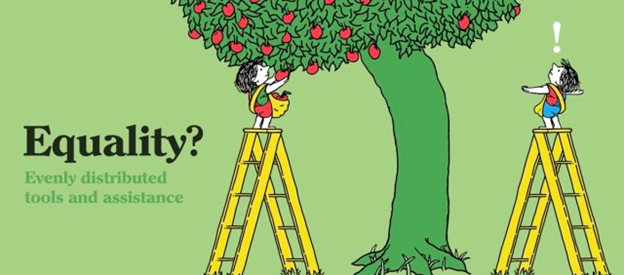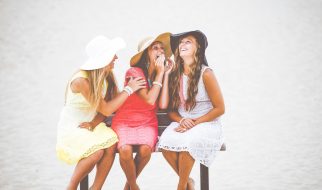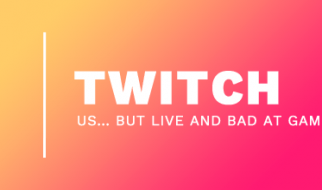There?s a new equity vs. equality cartoon that seems to be making the rounds on LinkedIn and Twitter. Published in John Maeda?s 2019 Design in Tech Report, it looks like this:
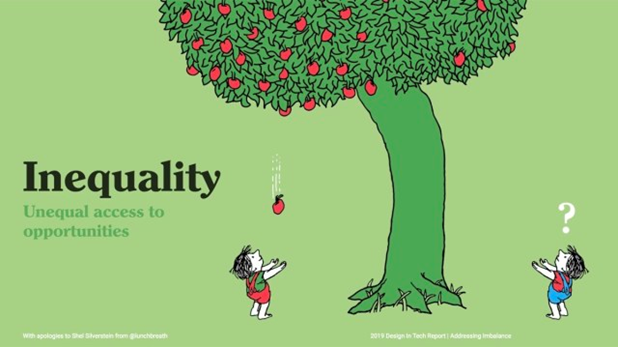
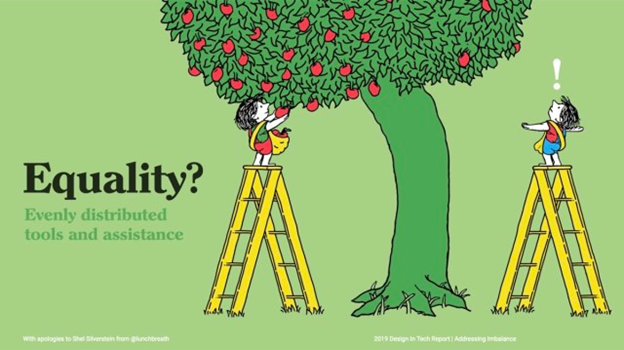

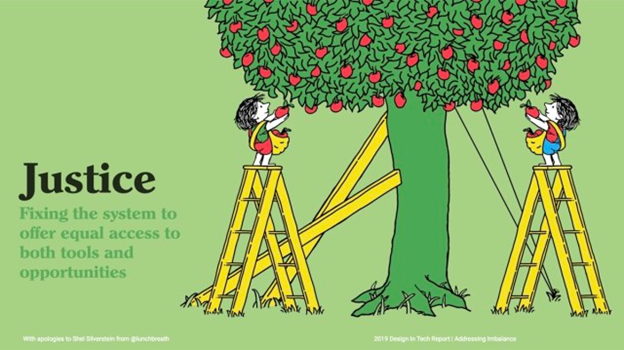
It reminds me of an older and widely shared equity vs. equality illustration that applies the terms to how folks of varying heights might watch a baseball game. In this version, equality is shown as giving every person the same box to stand upon, ultimately doing nothing to balance the viewing experience, where as equity achieves balance by giving the shortest person the highest box, allowing them to watch the game. This yields the most basic definition of equity ? giving folks what they need.
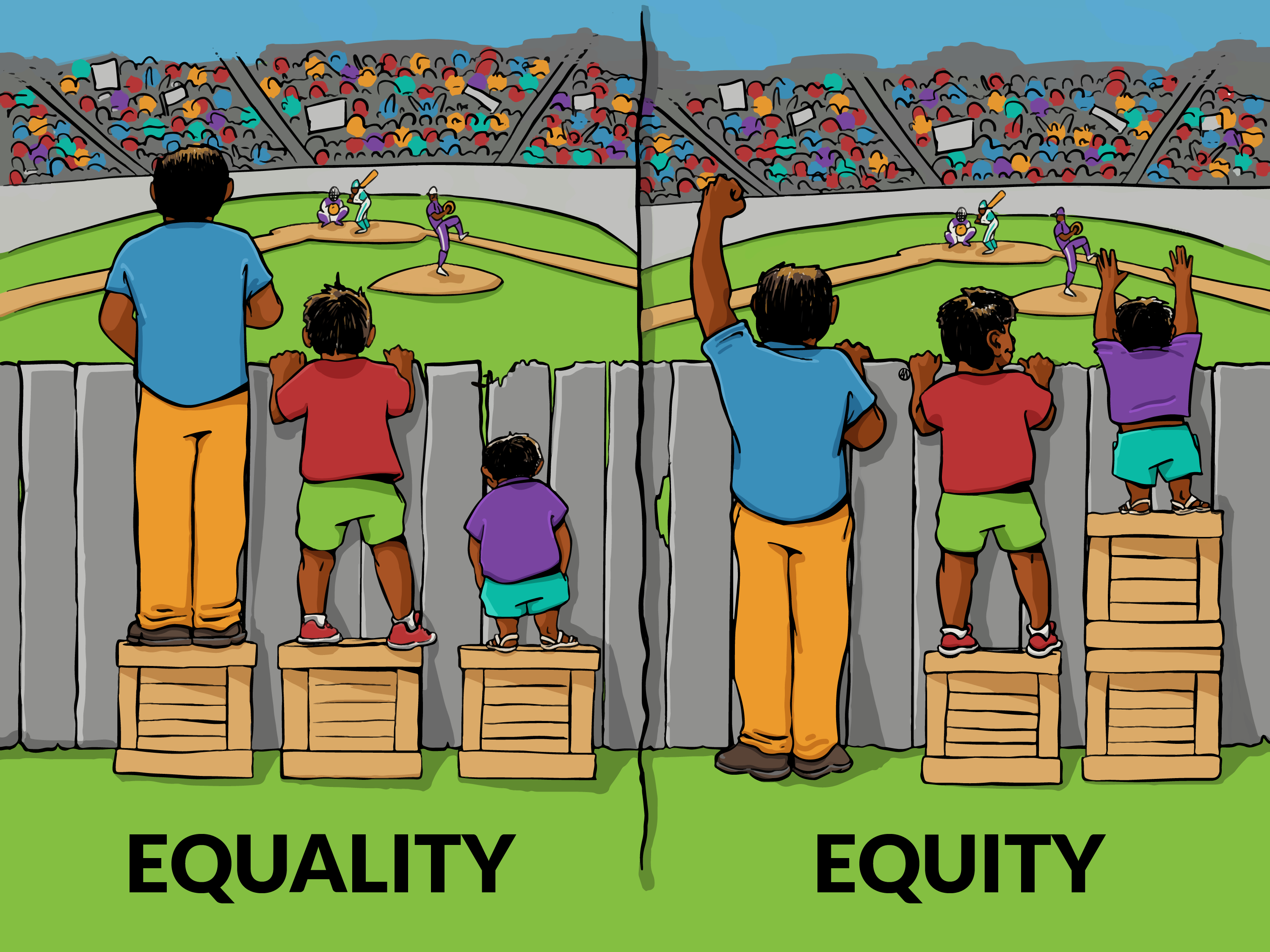
I loved this cartoon when I first saw it in college ? it?s a powerfully simple way to explain a tricky concept, especially with the way children are encouraged to ?treat everyone equally?.
But when I graduated from school and began to work in educational equity and larger diversity, equity, and inclusion (DEI) initiatives, the limitations of this cartoon quickly became apparent. I owe a huge debt to the activists and educators of color who taught me the complexities of injustice and liberation that were left obscured by this cartoon. And so ? in that spirit, let?s talk about the problem with this new graphic, specifically with how it shows inequality and justice. (I won?t spend time discussing the old cartoon, but you can learn more by reading Paul Kuttner?s breakdown here.)
Inequality is Designed, Not Accidental

In this first panel, inequality is shown as a bent over tree with the apples growing on only one side. The figure on the right stands questioning wile the one on the left effortlessly waits to catch falling apples. My first issue here is that using a bent tree as a metaphor for inequality suggests that today?s staggering levels of inequality are at some level natural and to be expected, just as one expects a tree to grow naturally, when nothing could be further from the truth. As I write this in May of 2020, the coronavirus has killed three black Americans for every one white American, a disparity that goes back to redlining and the exclusion of black WWII veterans from the benefits of the GI Bill. There is nothing accidental about today?s inequality, it is a reflection of intentional systems of oppression established in the past that continue today to privilege rich white men.
Justice Is Not That Easy

Armed with our understanding that this tree didn?t just grow this way, that somebody (probably the ancestors of the one on the left) must have manipulated the tree to grow to one side, we can extend this critique to how justice is depicted. With braces and a pulley, the tree has now been balanced out and both figures can access an equal distribution of fruit. This is lovely, but I?m confused as to why the ladders would be necessary at all if the system is truly bent towards justice? Moreover, I?m most concerned with how this depiction implies that broken and unjust systems are salvageable ? that with a little bit of push and pull they can be ?fixed? as the caption relates.
This simply isn?t true. Driving equity and justice isn?t about tinkering with systems that just ended up being imbalanced, it?s about dismantling oppressive systems that are working exactly as they were designed. I often tell people, we are building a world that has never existed before. To achieve justice we must be open to change that can be deeply radical and transformative.
This is why I begin DEI work not with statistics and strategic plans, but with individual conversations. If they are to take the challenge of equity work seriously, leaders must exemplify self-awareness, open-mindedness, and the courage to listen and change when challenged.
There are a host of other questions we could discuss about these cartoons. What should it look like if not a tree? What does it look like when there are not two people trying to pick apples, but two entire communities? Thinking about history and restorative justice, where was this tree planted and should it be moved?
If it feels like I?m making this incredibly complicated, that?s because it really is that complicated.
